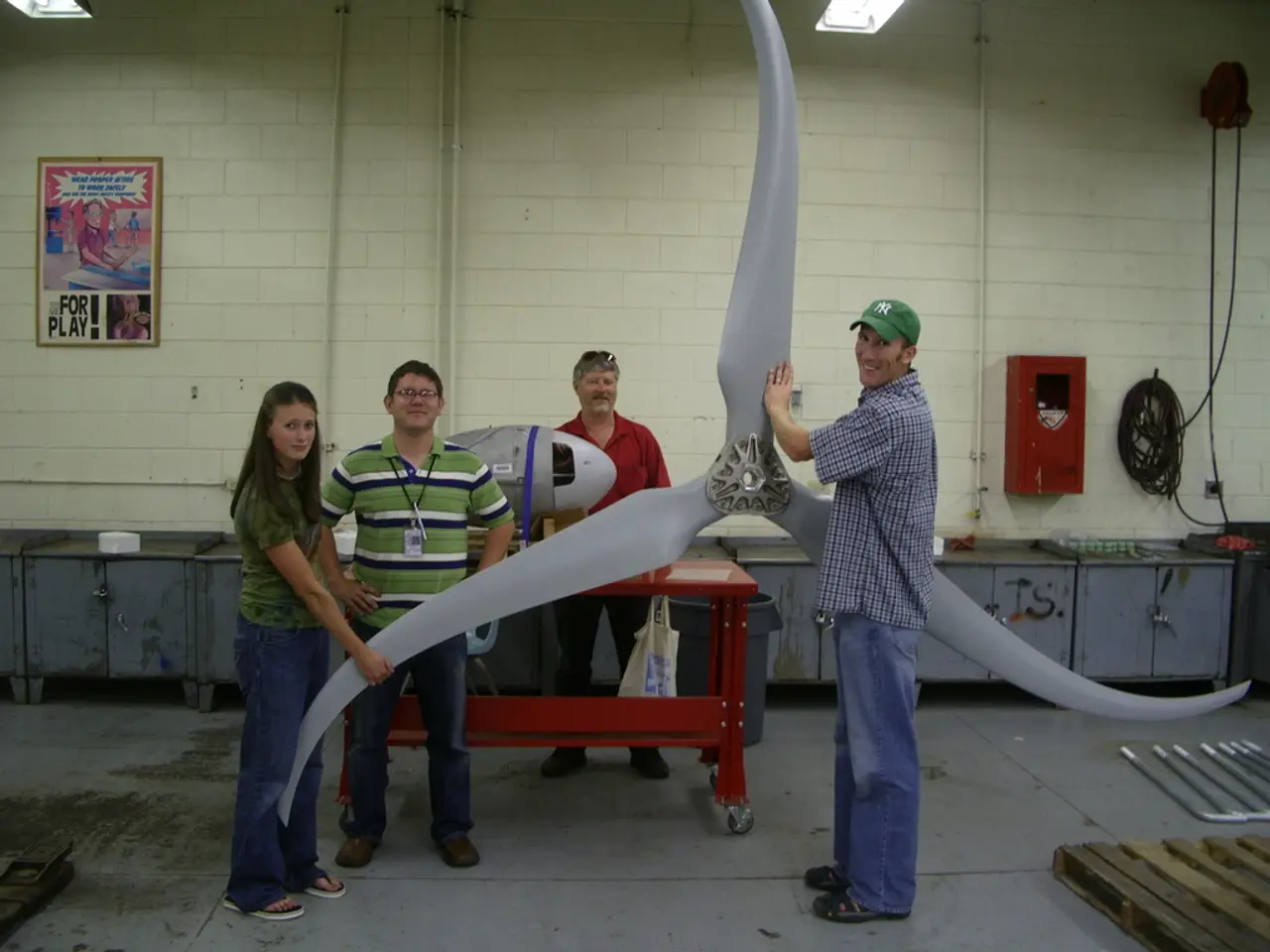Nuclear Fusion Mishap: A Catastrophe Downplayed – Understanding the Reasons Behind It
In the realm of energy production, fusion energy is gaining significant attention as a potential successor to traditional fission energy. While both methods harness nuclear reactions to generate power, they differ in many ways, particularly in terms of safety and potential disasters.
Fusion energy, the process that powers stars like our Sun, is an alternative to fission energy. In fusion, light elements, specifically isotopes of hydrogen, are combined to create heavier nuclei, releasing energy. Unlike fission energy, fusion energy does not pose the risk of long-term, highly radioactive waste. Instead, only minor and short-lived radioactivity is generated in fusion reactions, with the main product being inert helium.
Containing the super-hot fuel, usually with magnetic fields, is a technological challenge in fusion energy. Creating the necessary conditions to start the fusion reaction remains a challenge, but significant advancements are being made. Projects like ITER and SPARC are focused on demonstrating that a fusion reactor produces more energy than it consumes, a fundamental hurdle known as achieving net energy gain.
The safety of fusion energy is further ensured by the fact that a failure of a fusion reactor will immediately stop the energy generation. However, there are other challenges to consider. For instance, plasma control and stability, materials durability, fuel cycle management, cost and complexity, speed and accuracy of simulations, and remote maintenance are all areas of ongoing research and development.
Plasma control and stability is crucial as fusion requires confining extremely hot plasma at high temperature and pressure. Sudden disruptions in plasma are still not fully understood, and better control methods are needed to prevent damage to reactor equipment. Advances in AI and machine learning are helping to predict and manage these disruptions in real time.
Materials durability is another key concern, as developing materials that can withstand the extreme neutron fluxes and high temperatures inside a fusion reactor is critical. Novel refractory materials are being researched for this purpose.
Fuel cycle management, particularly handling and breeding tritium, a radioactive isotope essential as fusion fuel, poses challenges including safety and supply. Remote maintenance is also essential due to the extreme conditions, with robotic and remote handling technologies needing further development.
The speed and accuracy of simulations are also important, as fusion experiments rely on detailed plasma simulations that can be time-consuming. Machine learning is being applied to accelerate simulations and improve energy performance monitoring.
In conclusion, fusion energy technology is transitioning from research into demonstration phases, with most systems at technology readiness levels 4-7. Significant multidisciplinary collaboration and investment continue to be essential for overcoming these challenges and advancing towards commercial fusion power plants expected in the early 2030s.
As for the question 'What would a fusion energy disaster look like?', it's worth noting that fusion energy disasters do not have the potential for the kinds of environmental and ecological catastrophes seen in fission energy meltdowns. This is due to the nature of the reactions and the products of fusion reactions, which are generally safe.
References: [1] ITER. (n.d.). About ITER. Retrieved from https://www.iter.org/about [2] SPARC. (n.d.). About SPARC. Retrieved from https://www.tokamakenergy.com/sparc [3] U.S. Department of Energy. (n.d.). Fusion Energy. Retrieved from https://www.energy.gov/eere/fusion [4] European Fusion Development Agreement. (n.d.). ITER. Retrieved from https://www.efda.eu/projects/iter/
- Fusion energy, similar to the power source of our Sun, presents an alternative to traditional fission energy, as it combines light elements, specifically hydrogen isotopes, to create heavier nuclei, releasing energy.
- Unlike its counterpart, fusion energy does not generate long-term, highly radioactive waste, producing only minor and short-lived radioactivity, primarily inert helium.
- Containing the super-hot fuel is a technological challenge, often achieved with magnetic fields, yet starting the fusion reaction itself remains challenging, with advancements being made in projects like ITER and SPARC.
- Plasma control and stability are critical for fusion, as sudden disruptions are not fully understood and better control methods are needed to prevent damage to reactor equipment, which AI and machine learning are helping to address.
- Materials durability is another concern, with the need for materials that can withstand extreme neutron fluxes and high temperatures, the development of novel refractory materials is being researched.
- Fuel cycle management, particularly handling and breeding tritium, a radioactive isotope essential as fusion fuel, presents challenges including safety and supply, with remote maintenance technologies requiring further development.




